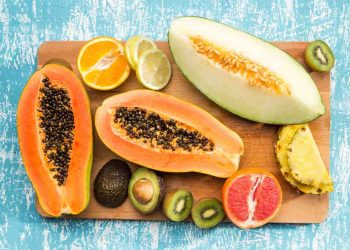Have you ever noticed that after a long day of sitting, your legs feel like they’re made of lead? You’re not alone. Poor circulation can lead to discomfort, swelling, and even more serious health issues over time. While there are various ways to improve circulation, did you know that certain fruits can give your legs a natural boost? Let’s dive into five fruits that can help enhance leg circulation and keep you feeling spry.
Contents
1. Berries: A Colorful Circulation Booster
When it comes to fruits that promote good circulation, berries top the list. Blueberries, strawberries, and raspberries are packed with antioxidants, specifically flavonoids, which are known to improve blood flow.
Why Berries?
Berries contain compounds that help dilate blood vessels, reducing blood pressure and improving circulation. A study published in the American Journal of Clinical Nutrition found that consuming flavonoid-rich foods, like berries, was linked to improved circulation and cardiovascular health (Böhm et al., 2019).
Pros and Cons
Pros:
- High in antioxidants
- Low in calories
- Versatile in recipes (smoothies, salads, snacks)
Cons:
- Can be expensive if not in season
- Some people may have allergies
Fun Fact
Did you know that the darker the berry, the more antioxidants it typically contains? So, while strawberries are delicious, blueberries and blackberries are your best bet for a circulation boost!
2. Citrus Fruits: Zesty Zing for Your Vascular Health
Citrus fruits like oranges, lemons, and grapefruits are not only refreshing but also great for circulation. They’re rich in vitamin C, which helps strengthen blood vessels and improve overall cardiovascular health.
The Science Behind Citrus
Vitamin C is crucial for collagen production, a protein that helps maintain the integrity of blood vessels. A study in the Journal of Nutrition indicated that higher vitamin C intake is associated with better vascular function (Hodgson et al., 2017).
Pros and Cons
Pros:
- High in vitamin C
- Hydrating and refreshing
- Can boost your immune system
Cons:
- Some people may experience acid reflux
- Can be messy to eat
A Zesty Tip
Try adding lemon or lime juice to your water for a refreshing drink. It’s a simple way to incorporate more citrus into your diet!
3. Apples: The Everyday Fruit with Big Benefits
An apple a day might just keep poor circulation away! Apples are a fantastic source of fiber and vitamin C, which can help improve blood flow and lower cholesterol levels.
What Makes Apples Special?
The soluble fiber in apples, particularly pectin, can help lower cholesterol levels and improve overall heart health. A study published in the Journal of Agricultural and Food Chemistry found that apples can promote cardiovascular health due to their high antioxidant content (Saxena et al., 2016).
Pros and Cons
Pros:
- Convenient and portable
- Available year-round
- Versatile: eat raw, in salads, or in baked goods
Cons:
- May cause digestive issues for some people
- The skin contains pesticides if not organic
Creative Ways to Enjoy Apples
Slice them up and pair them with almond butter for a delicious snack! Or toss some diced apples into your morning oatmeal for a sweet crunch.
4. Beets: The Unsung Hero of Circulation
Okay, so beets may not be your go-to fruit, but they’re definitely worth mentioning! These root vegetables are high in nitrates, which help widen blood vessels and improve blood flow.
The Nitrate Connection
Beets are unique because they contain high levels of dietary nitrates, which convert into nitric oxide in the body. This compound helps relax and dilate blood vessels, improving circulation. A study in the Journal of Applied Physiology found that beetroot juice consumption improved exercise performance and increased blood flow (Lansley et al., 2011).
Pros and Cons
Pros:
- Can enhance athletic performance
- High in fiber and essential nutrients
- Versatile in cooking (salads, juices, soups)
Cons:
- Can stain your hands and clothes
- Some people dislike the earthy taste
Beet It Up!
If you’re not a fan of beets, consider trying beet juice or incorporating them into smoothies. The sweetness of other fruits can mask their earthy flavor!
5. Avocado: The Creamy Circulation Champion
While technically a fruit, avocados are often overlooked in the fruit category. They’re rich in healthy fats, potassium, and vitamins that can help improve circulation.
The Healthy Fat Factor
Avocados are loaded with monounsaturated fats, which can help lower bad cholesterol levels and improve heart health. The potassium in avocados also helps regulate blood pressure, further enhancing circulation. A study in the Journal of the American Heart Association found that increasing potassium intake is associated with lower blood pressure (Whelton et al., 2018).
Pros and Cons
Pros:
- High in healthy fats
- Nutrient-dense and filling
- Versatile in dishes (salads, spreads, smoothies)
Cons:
- Higher in calories than other fruits
- Can be pricey
Avocado Hacks
Spread avocado on whole-grain toast for a delicious breakfast, or toss some diced avocado into your salad for a creamy texture. It’s a great way to sneak in healthy fats!
FAQs
1. How do I incorporate these fruits into my diet?
You can add these fruits to smoothies, salads, or simply enjoy them as snacks. Get creative with recipes!
2. Are there any fruits I should avoid for circulation issues?
While most fruits are beneficial, limit those high in sugar if you’re concerned about blood sugar levels.
3. Can I rely solely on fruits for improving circulation?
Fruits are a great addition, but a balanced diet, regular exercise, and hydration are also crucial for good circulation.
4. How long until I see improvements in my circulation?
It varies by individual, but incorporating these fruits regularly can lead to noticeable changes in a few weeks.
Conclusion
Taking care of your circulation doesn’t have to be a daunting task. By incorporating these five fruits—berries, citrus fruits, apples, beets, and avocados—into your diet, you can naturally enhance your leg circulation and overall cardiovascular health. Plus, they’re delicious!
So, the next time you feel that heaviness in your legs, consider reaching for a berry smoothie or a zesty citrus salad. Your legs will thank you!
This article is for educational purposes only and is not a substitute for professional medical advice. Always consult a qualified healthcare provider before making changes to your health routine.
References
-
Böhm, V., et al. (2019). Flavonoid-rich foods and vascular function: A systematic review. American Journal of Clinical Nutrition. https://academic.oup.com/ajcn/article/109/3/670/5302744
-
Hodgson, J. M., et al. (2017). Vitamin C intake and vascular function: A systematic review. Journal of Nutrition. https://academic.oup.com/jn/article/147/10/1881/4558229
-
Lansley, K. E., et al. (2011). Acute dietary nitrate supplementation improves cycling time trial performance in trained cyclists. Journal of Applied Physiology. https://journals.physiology.org/doi/full/10.1152/japplphysiol.00153.2011
-
Saxena, A., et al. (2016). Apples: A review of their health benefits. Journal of Agricultural and Food Chemistry. https://pubs.acs.org/doi/abs/10.1021/acs.jafc.5b04880
-
Whelton, P. K., et al. (2018). Global burden of hypertension: Analysis of worldwide data. Journal of the American Heart Association. https://www.ahajournals.org/doi/full/10.1161/JAHA.118.010877
Get Your FREE Natural Health Guide!
Subscribe now and receive our exclusive ebook packed with natural health tips, practical wellness advice, and easy lifestyle changes — delivered straight to your inbox.














